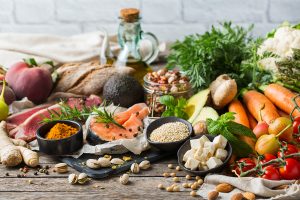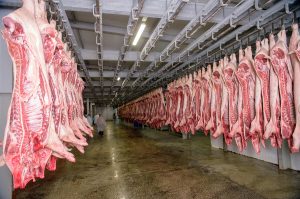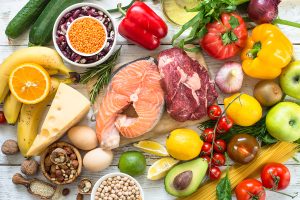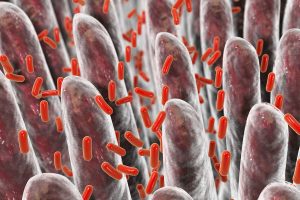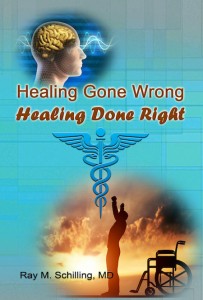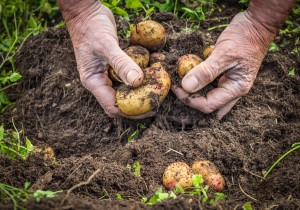This article describes the dirty dozen and the clean fifteen.
The environmental working group (EWG) defined the “dirty dozen” as crops, which farmers pollute by repetitive spraying. Notably, this is a list of the 12 most insecticide-sprayed crops like strawberries, spinach, tomatoes and others. It is important to realize that in the last few years, the EWG added the 15 clean crops. For this reason, if you want to avoid toxins on your food you exchange the 12 dirty dozen for organically grown crops. Specifically, you can also rest assured that the pollution levels in your food is of no concern, when you add the “clean fifteen” since these crops are relatively non-polluted. By all means, I have used this shopping guide for over 10 years and always look for the yearly updates.
The dirty dozen
Here is the dirty dozen:
- Strawberries
- Spinach
- Kale, collard & mustard greens
- Nectarines
- Apples
- Grapes
- Bells and hot peppers
- Cherries
- Peaches
- Pears
- Celery
- Tomatoes
It is important to realize that certain agricultural methods lead to the insecticide contamination of the dirty dozen. It may come as a surprise that not only spinach, strawberries and cherries, but also apples, grapes, celery and tomatoes are very contaminated. I buy only organic equivalent versions of the dirty dozen.
The list of the clean fifteen
Here is the list of the clean fifteen:
- Avocados
- Sweet corn
- Pineapple
- Onions
- Papaya
- Sweet peas (frozen)
- Asparagus
- Honeydew melon
- Kiwi
- Cabbage
- Mushrooms
- Cantaloupe
- Mangoes
- Watermelon
- Sweet potatoes
These are crops that you can buy and eat, because they are not contaminated with insecticide spray. There is a yearly update on the website, which informs you of any changes of the contaminated crops. So far little has changed over several years.
According to the CNN article cited in the beginning of this article 70% of the clean fifteen list have no detectable residues of pesticides. Just under 5% of this list had two or more pesticide residues. For this reason I would label those as relatively non- polluted.
Why pesticides are dangerous
Toxicity of pesticides depends on the chemical configuration. Some are more toxic than others. But in combination pesticides are much more toxic than each one of them alone. Some pesticides irritate the skin, others the eyes. Other chemicals are toxic to the nervous system and the hormone system. And on the long-term pesticides can cause cancer.
Specific toxins
- DCPA http://extoxnet.orst.edu/pips/DCPA.htm is a general herbicide that farmers spray on several vegetable crops. It was banned by the European Union in 2009.
- Nut and fruit tree farms use Chlorpyrifos, a pesticide, which farmers also spray on broccoli and cauliflower. The EPA banned this substance in February 2022. Chlorpyrifos contains an enzyme that causes neurotoxicity in children. It also causes neurodevelopmental effects in children.
- Organophosphates block acetylcholinesterase, an enzyme that inactivates acetylcholine. Toxicity of organophosphates comes from poisoning with acetylcholine, which overstimulates muscles. https://en.wikipedia.org/wiki/Organophosphate_poisoning#Pathophysiology The brains of babies and children are very sensitive to the toxic effect of organophosphates.
- A number of pesticides are endocrine-disrupting chemicals. This can have permanent or long-lasting effects on the reproductive development. https://cfpub.epa.gov/si/si_public_record_report.cfm?Lab=NHEERL&dirEntryId=212273
Complaints of the industry about the EWG
The industry has repeatedly complained about the EWG that the publication of the dirty dozen would harm the sales of crops. But studies done by the EWG showed that only 1 in 6 consumers are buying less vegetables and fruit. Alexis Temkin, a toxicologist at the EWG with expertise in toxic chemicals and pesticides said: “The study actually shows that just over half of people surveyed said the ‘Dirty Dozen’ list made them more likely to buy fruits and vegetables.”
Here is what the consumer can do
- Rinse fruit and vegetables before you serve it; this removes surface toxins
- Buy food from a local farmer; you can enquire about his farming practices.
- Buy produce in season; if you buy organic crops they are most reasonable are that time, and you can prepare or freeze the fruit and vegetables for future use.
Conclusion
The environmental working group (EWG) developed the concept of the 12 dirty dozen and the clean fifteen crops. The consumer needs to know the 12 dirty dozen, as he/she has to buy organic crops as a replacement for this. On the other hand, you can buy the 15 clean crops, but you first need to know what is on the list. Knowledge is power, and knowing about these crops ensures that you keep insecticides, fungicides and herbicides out of your body. This information is not only important for adults and youth, but particularly important for babies and small children. Chlorpyrifos, which was banned in February of 2022 in the US causes neurotoxicity in children. But it also causes neurodevelopmental effects in children. The cleaner the crops are that we eat, the healthier our bodies are.


